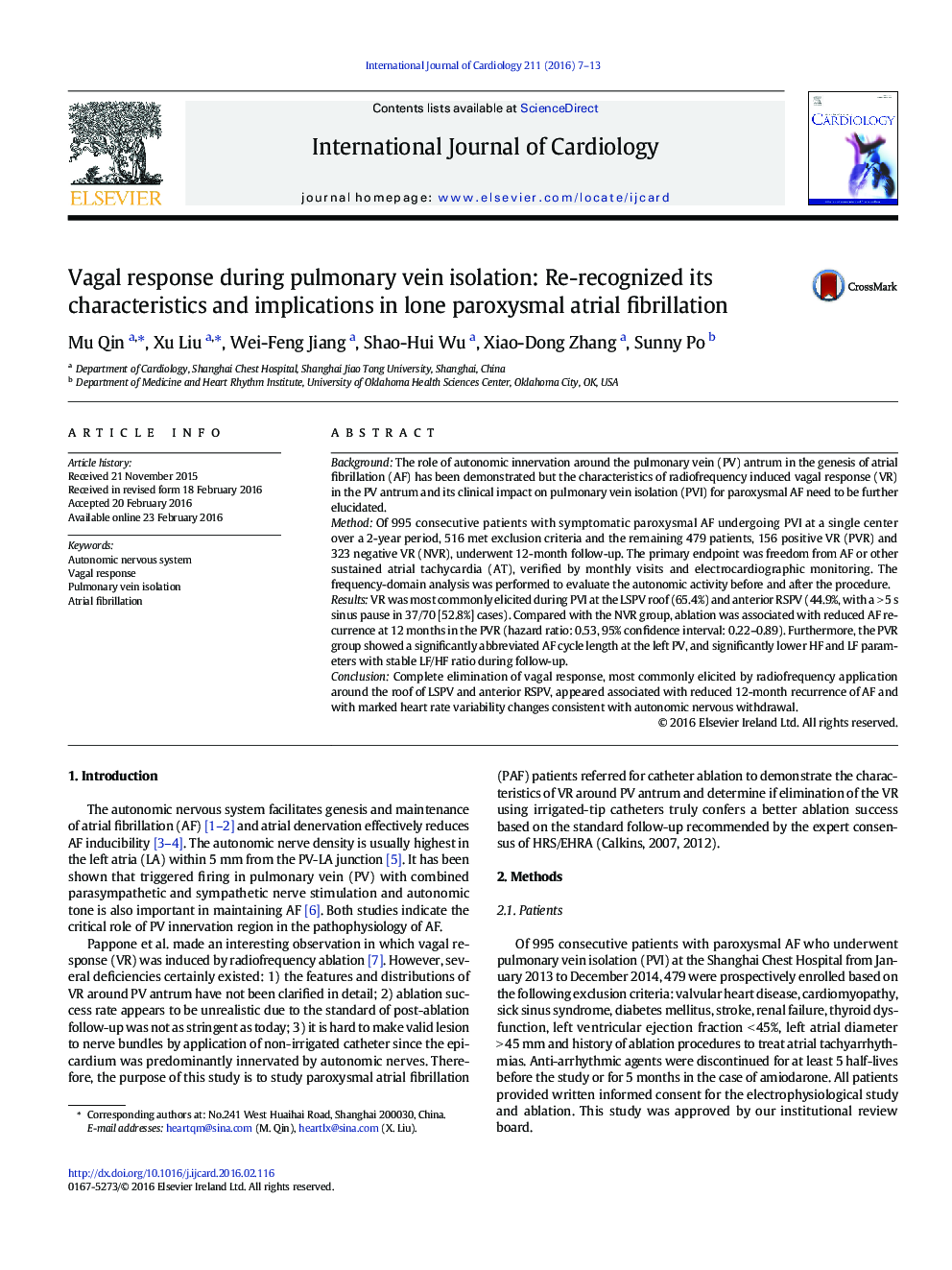| Article ID | Journal | Published Year | Pages | File Type |
|---|---|---|---|---|
| 2928853 | International Journal of Cardiology | 2016 | 7 Pages |
BackgroundThe role of autonomic innervation around the pulmonary vein (PV) antrum in the genesis of atrial fibrillation (AF) has been demonstrated but the characteristics of radiofrequency induced vagal response (VR) in the PV antrum and its clinical impact on pulmonary vein isolation (PVI) for paroxysmal AF need to be further elucidated.MethodOf 995 consecutive patients with symptomatic paroxysmal AF undergoing PVI at a single center over a 2-year period, 516 met exclusion criteria and the remaining 479 patients, 156 positive VR (PVR) and 323 negative VR (NVR), underwent 12-month follow-up. The primary endpoint was freedom from AF or other sustained atrial tachycardia (AT), verified by monthly visits and electrocardiographic monitoring. The frequency-domain analysis was performed to evaluate the autonomic activity before and after the procedure.ResultsVR was most commonly elicited during PVI at the LSPV roof (65.4%) and anterior RSPV (44.9%, with a > 5 s sinus pause in 37/70 [52.8%] cases). Compared with the NVR group, ablation was associated with reduced AF recurrence at 12 months in the PVR (hazard ratio: 0.53, 95% confidence interval: 0.22–0.89). Furthermore, the PVR group showed a significantly abbreviated AF cycle length at the left PV, and significantly lower HF and LF parameters with stable LF/HF ratio during follow-up.ConclusionComplete elimination of vagal response, most commonly elicited by radiofrequency application around the roof of LSPV and anterior RSPV, appeared associated with reduced 12-month recurrence of AF and with marked heart rate variability changes consistent with autonomic nervous withdrawal.
